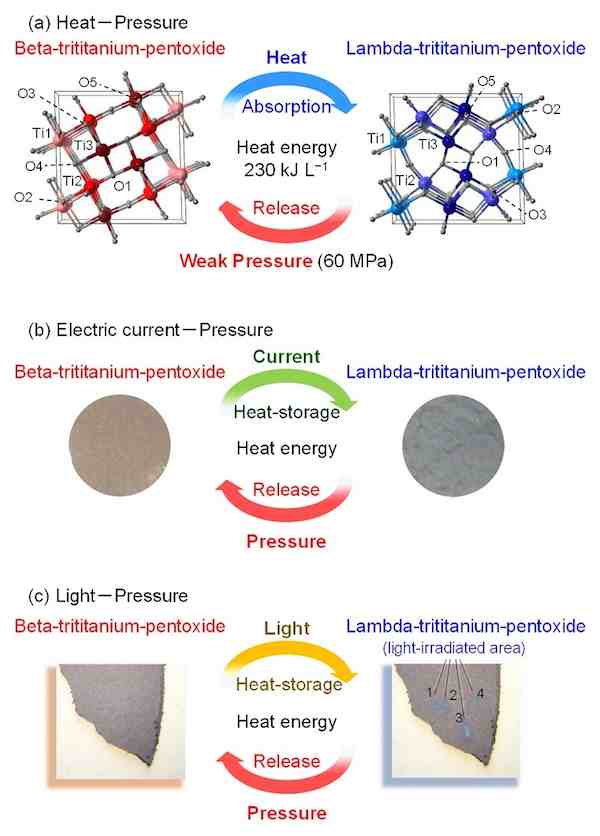
[Image above] Credit: Paul; Flickr CC BY-NC-ND 2.0
Scientists at the University of Tokyo have discovered a unique ceramic that can store heat long-term and release it on-demand, opening up new possibilities for a variety of energy storage systems.
The material, stripe-type trititanium pentoxide, undergoes a solid–solid phase change upon absorption of heat from beta-trititanium pentoxide to lambda-trititanium pentoxide, which can store that energy stably for long periods of time.
This is where the new ceramic diverges from most other heat storage materials, which can only store energy for a short time and release it spontaneously. Bricks are good heat storage materials—they can absorb a fair amount of heat, but how and when that heat is released cannot be controlled.
Lambda-trititanium pentoxide, however, is different. It can release long-stored energy under pressure. When the scientists applied a relatively weak pressure of just 60 MPa, lambda-trititanium pentoxide released its stored energy and returned to its beta phase. (At 60 MPa, half of the lambda converted to beta.)
In addition to heat, the ceramic material can also absorb energy from an electric current or light irradiation, expanding its potential applications even wider.

The material stores energy by (a) heating, (b) electric current, or (c) light irradiation, and releases energy upon weak pressure. Credit: Shin-ichi Ohkoshi; U. of Tokyo
The material can cyclically absorb and release a fair amount of energy—230 kJ/L. And it has good thermal conductivity, with figures similar to brick.
The authors speculate their new material might be useful to collect energy in solar heat power generation systems, industrial heat waste, and advanced electronics that make use of the materials’ pressure sensitivity.
In addition to its heat storage uses, the material might also find application in sensor and switching memory device applications, according to the paper’s abstract.
The open-access paper, published in Nature Communications, is “External stimulation-controllable heat-storage ceramics” (DOI: 10.1038/ncomms8037).
